实验六 进程基础
| 项目 | 内容 |
|---|---|
| 这个作业属于哪个课程 | <班级课程的主页链接 > |
| 这个作业的要求在哪里 | <作业要求链接接地址> |
| 学号-姓名 | 18043106-温悦 |
| 作业学习目标 | 1.掌握Linux系统环境C语言编程概念 2.学习Linux系统进程概念 |
1.请举例说明静态链接库的创建与使用。
ar:建立,修改档案或从档案中抽取成员
ar -r :替换归档文件中已有的文件或加入新文件
ar -t :显示归档文件内容
举例:
//文件名:add.c,加法
int add(int a,int b){
return a+b;
}
//文件名:sub.c,减法
int sub(int a,int b){
return a-b;
}
//文件名:main.c
#include <stdio.h>
int add(int a,int b);
int sub(int a,int b);
int main(){
printf("3 + 1 = %d\n",add(3,1));
printf("3 - 1 = %d\n",sub(3,1));
return 0;
}


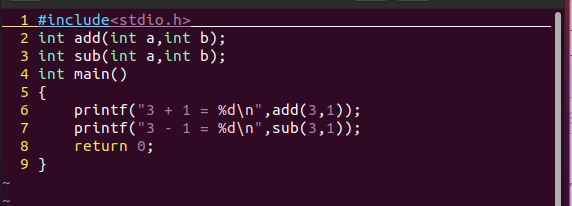
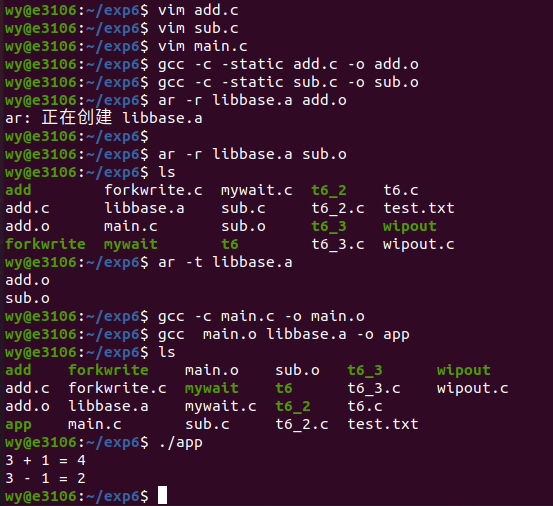
2.请举例说明共享库的创建与使用
开始的目录结构:
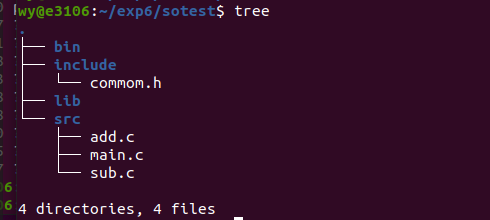
//文件名:common.h
#ifndef _COMMON_
#define _COMMON_
int add(int a,int b);
int sub(int a,int b);
#endif
//文件名:add.c
int add(int a,int b){
return a+b;
}
//文件名:sub.c
int sub(int a,int b){
return a-b;
}
//文件名:main.c
#include<stdio.h>
#include"common.h"
int main(){
printf("3+1=%d\n",add(3,1));
printf("3-1=%d\n",sub(3,1));
}
创建共享库:
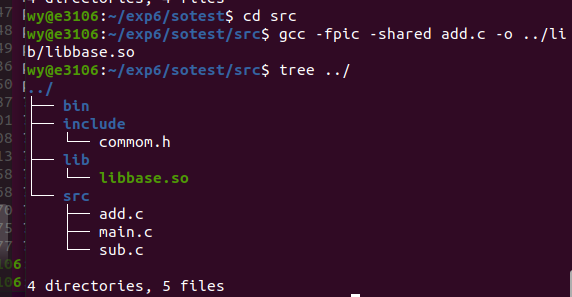
3.编程实现一个简单文件复制命令。
#include <unistd.h>
#include <sys/types.h>
#include <sys/stat.h>
#include <fcntl.h>
#include <stdio.h>
#define BUFFERSIZE 4096
int main(int argc, char* argv[]) {
if (argc != 3) {
printf("usage:\n mycp src dst\n");
return 1;
}
int srcfd = open(argv[1], O_RDONLY);
if (srcfd == -1) {
perror("open");
return 1;
}
int dstfd = open(argv[2], O_CREAT | O_WRONLY, 0666);
if (dstfd == -1) {
close(srcfd);
perror("open");
return 1;
}
int len = 0;
char buffer[BUFFERSIZE] = {0};
while((len = read(srcfd, buffer, BUFFERSIZE)) > 0) {
if (write(dstfd, buffer, len) != len) {
perror("write error");
return 1;
}
}
if (len < 0) {
perror("read error");
return 1;
}
close(srcfd); // 关闭文件
close(dstfd);
return 0;
}
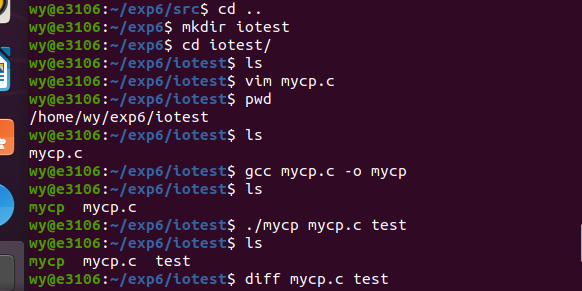
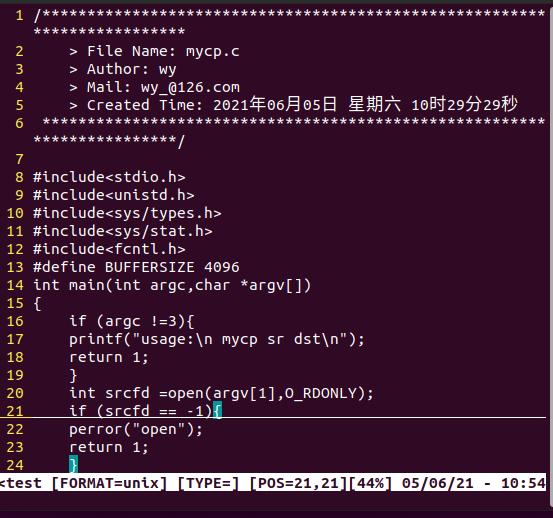
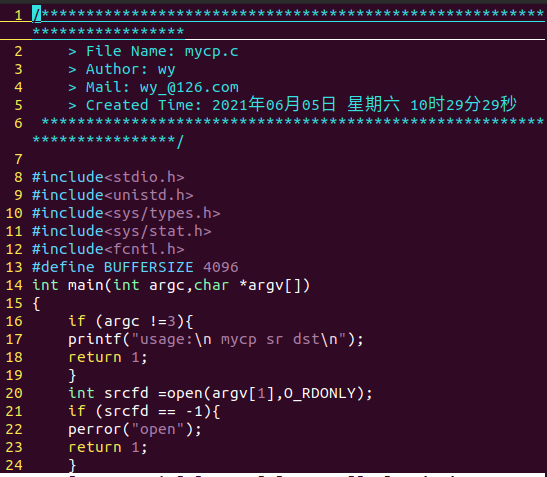
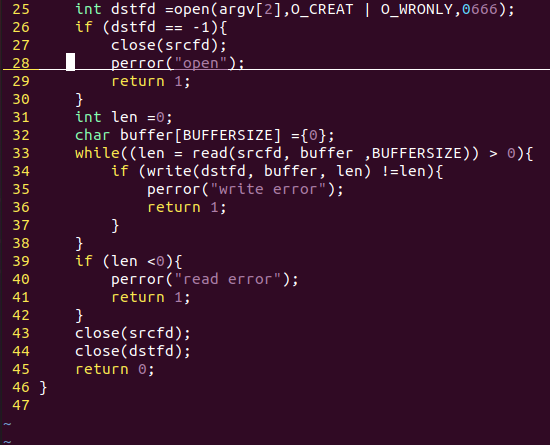
4.使用fork创建一个子进程,进程创建成功后父子进程分别输出不同的内容。
///文件名:fork1.c
#include <stdio.h>
#include <stdlib.h>
#include <unistd.h>
int main(){
pid_t pid;
printf("[%d]:Begin! \n",getpid());
fflush(NULL);
pid = fork();
if(pid<0)
{
perror("fork()");
exit(1);
}
else if(pid > 0)
{
printf("[%d]:Parent process if working!\n",getpid());
}
else
{
printf("[%d]:Child process if working!\n",getpid());
}
printf("[%d]:Finish!\n",getpid());
return 0;
}

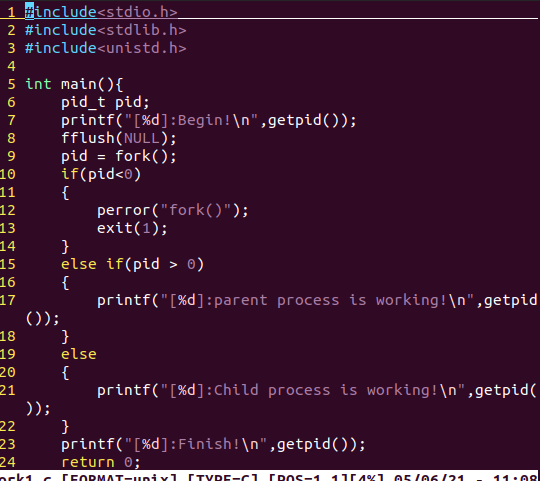


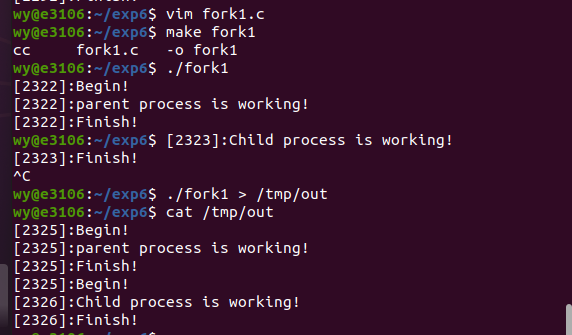
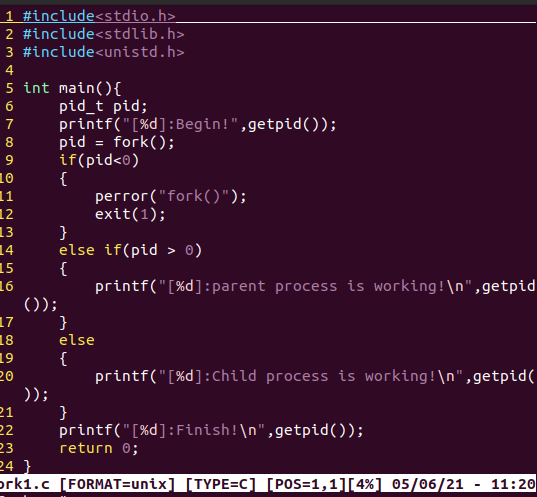
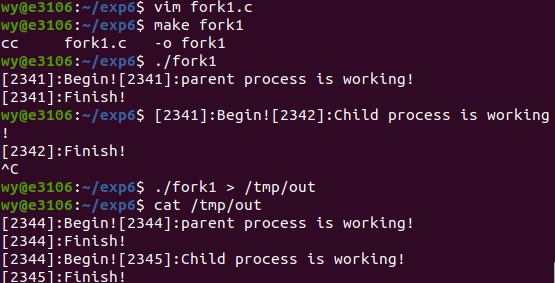
Begin之后不换行
全缓冲: 全缓冲指的是系统在填满标准IO缓冲区之后才进行实际的IO操作; 对于驻留在磁盘上的文件来说通常是由标准IO库实施全缓冲。
行缓冲: 在这种情况下,标准IO在输入和输出中遇到换行符时执行IO操作; 流涉及终端的时候,通常使用的是行缓冲
5.使用fork创建多个子进程。
#include <stdio.h>
#include <stdlib.h>
#include <unistd.h>
int main(){
int i;
pid_t pid;
printf("[%d] Begin! \n",getpid());
for (i = 0;i < 3; i++)
{
if((pid = fork()) ==0 )
break;
}
if(pid<0)
{
perror("fork()");
exit(1);
}
else if(pid > 0)
{
printf("[%d] Parent process is working!\n",getpid());
}
else
{
printf("[%d] Child process %d is working!\n",getpid(),i);
}
return 0;
}
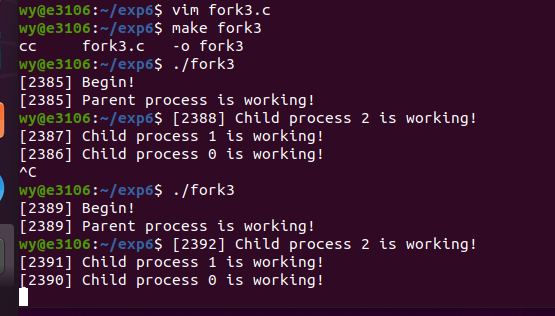

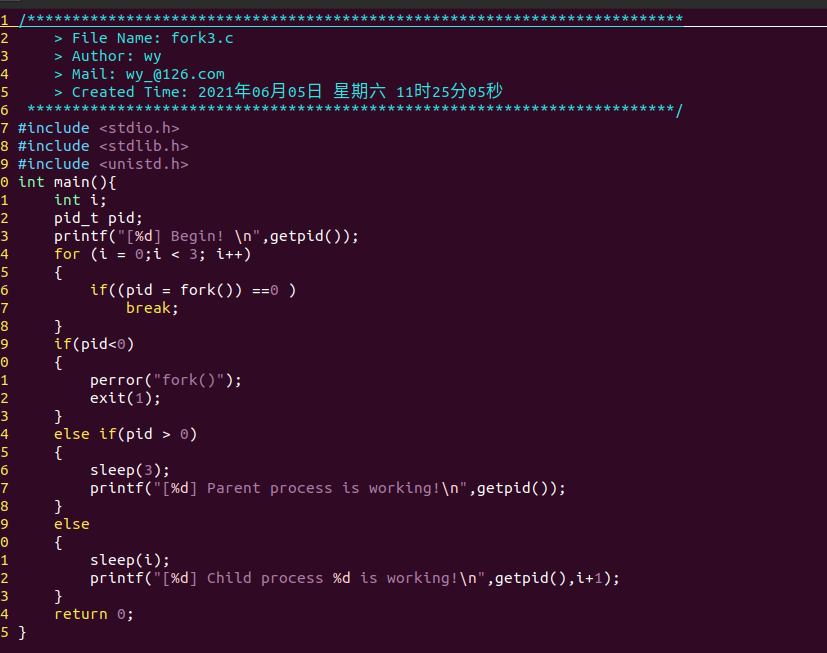
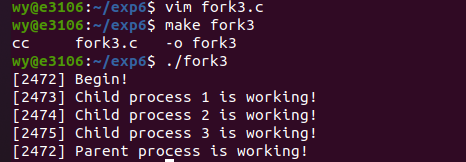
6.在 fork 之前以写的方式创建了一个文件 test.txt。然后 fork 出的子进程立即向文件中写入“world”,然后睡眠5秒。而父进程在 fork 后睡眠3秒后向 test.txt 写入 "hello",并关闭描述符。子进程恢复后,又向 test.txt 文件中写入 "lalala"后关闭描述符,结束。

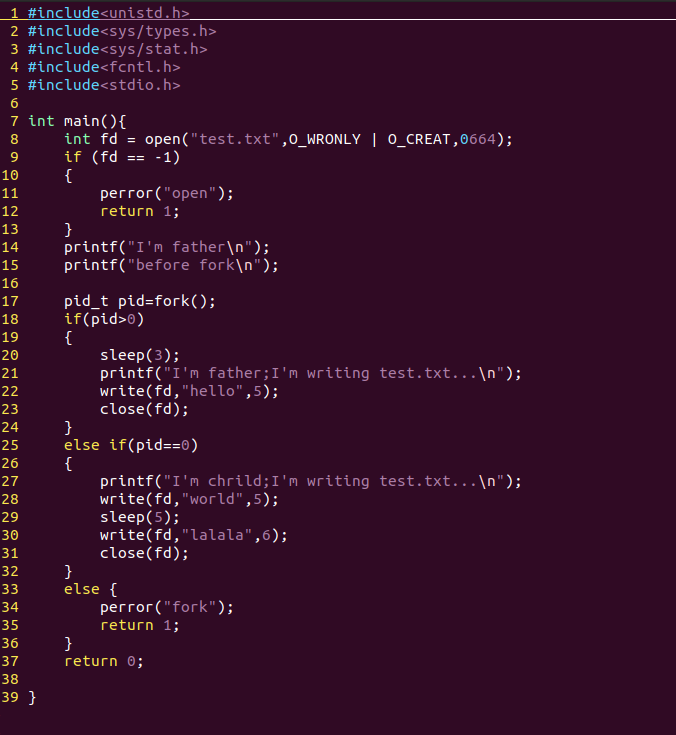
7.分别在主函数中使用execvp启动ls命令以及使用fork函数产生子进程调用execvp启动ls。
(1)使用execvp启动ls命令
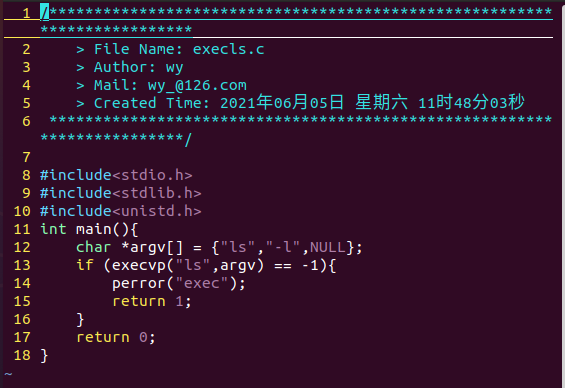
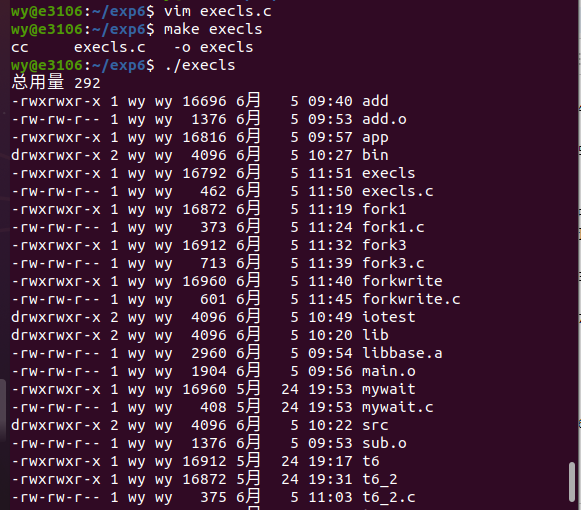
(2)使用fork函数产生子进程调用execvp启动ls
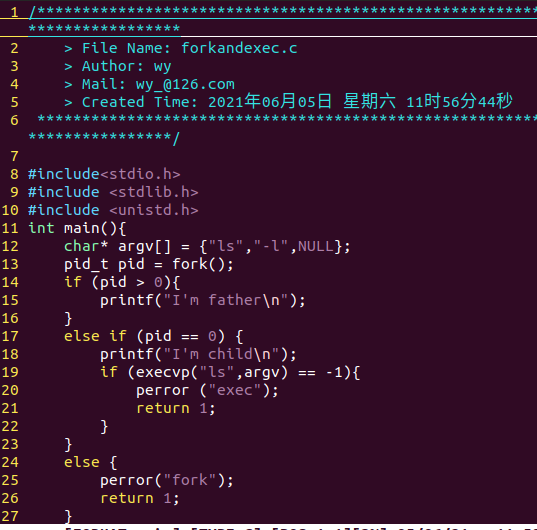
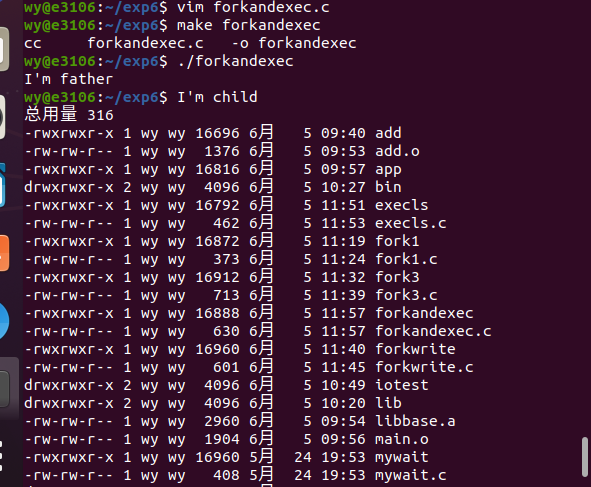
8.创建5个僵尸进程,并在终端通过ps axf命令查看僵尸进程信息
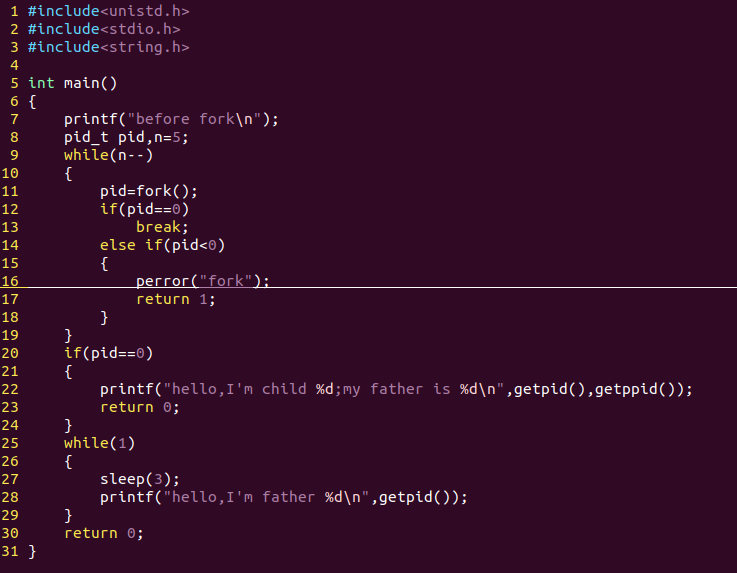
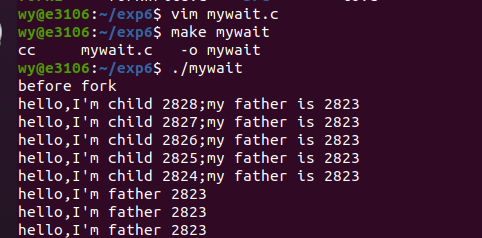

9.通过wait来清理僵尸进程。

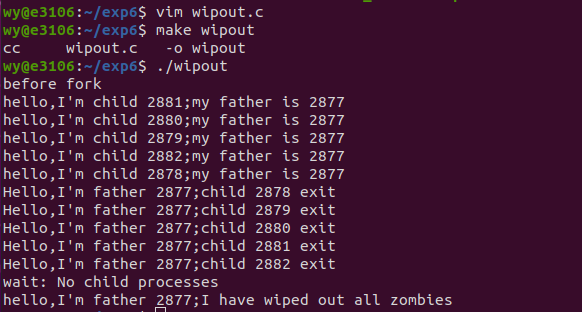
10.父进程通过 waitpid 函数等待特定子进程结束,若该子进程不结束,父进程一直阻塞。
waitpid
(1)函数功能:用来等待某个特定进程的结束
(2)函数原型:
pid_t waitpid(pid_t pid, int *status, int options);
(3)参数:
status如果不为空,会把状态信息写到它指向的位置
options允许改变waitpid的行为,最有用的一个选项是WNOHANG,它的作用是防止waitpid把调用者的执行挂起.
(4)返回值:成功返回等待子进程的pid,失败返回-1
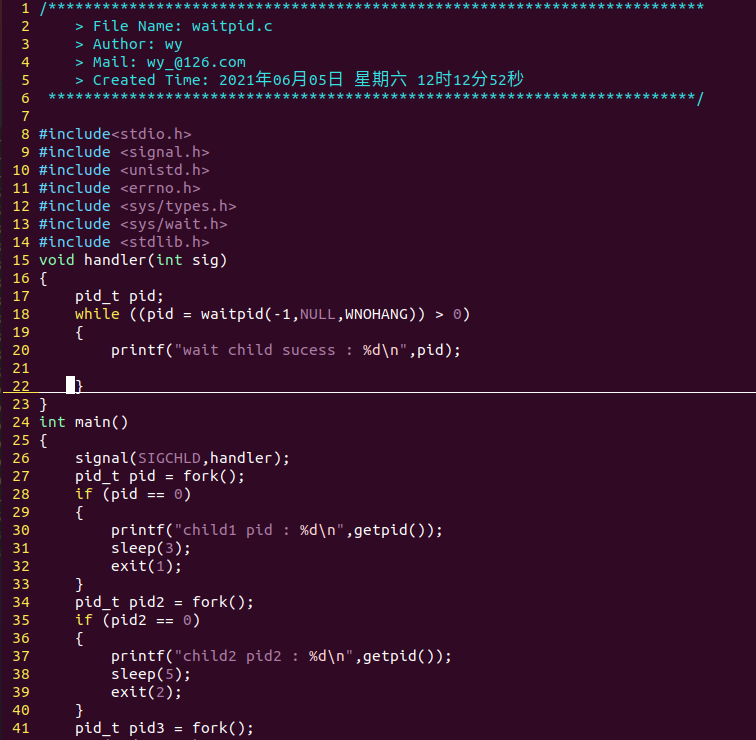

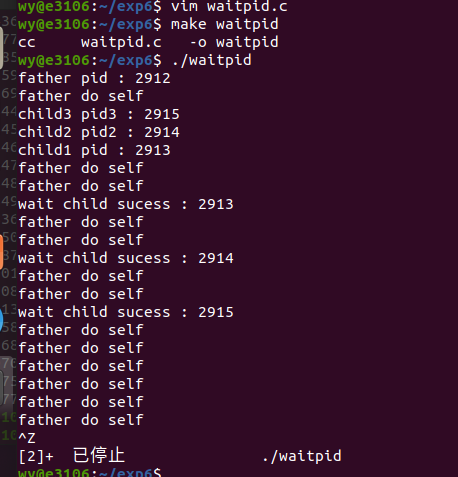



 浙公网安备 33010602011771号
浙公网安备 33010602011771号